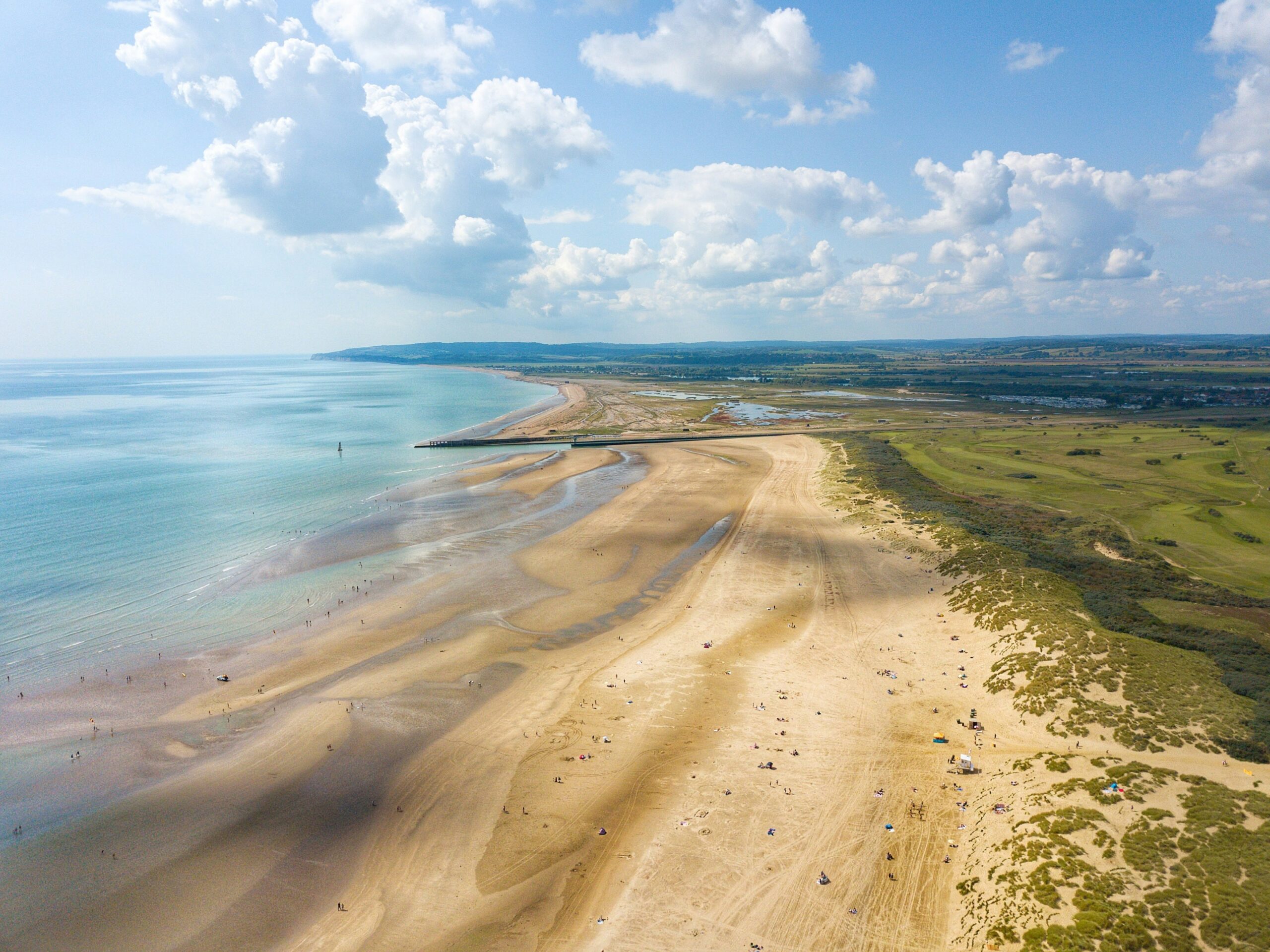Photo by Chris Mitchell
Southern Water is investigating after millions of contaminated plastic beads washed up on Camber Sands beach, risking an “environmental catastrophe”, according to the local MP.
The biobeads could have a dire impact on marine life, with fears rare sea life, including seabirds, porpoises and seals, could ingest them and die. Helena Dollimore, the MP for Hastings and Rye, suspects the beads may have been spilled by a local water treatment centre and has written to the Southern Water chief executive, Lawrence Gosden, demanding an explanation.
The dark grey or black biobeads, approximately 5mm in size and commonly used in wastewater treatment plants, have come ashore in Camber, according to Rother District Council. Camber Sands in East Sussex is one of England’s most beloved beaches, with rare dune habitat and vast stretches of golden sand.
Andy Dinsdale, from the plastic pollution campaign group Strandliners, said on Saturday: “This is the worst pollution event I have ever seen. It is contaminated plastic. Marine animals will ingest small plastic items once they are in the sea, they will attract algae, they will smell like food, effectively. Once they’ve eaten it, that’s it: they can’t get it out. They will float on the surface. It will create a slick which attracts plunging seabirds.”
He described the clean-up efforts as exhausting: “Yesterday I was out there cleaning it up. We are trying to really piece together the timeline and the story for this horrendous event. It’s terrible. They are so small that, from a very long way off, the beach looks normal. But as soon as you get close up you see there are millions of black pellets, nestled under seaweed. It’s an impossible task – volunteers have been raking for days, and they will continue to rake, but we won’t be able to get rid of them all. It is the worst I have ever seen of a polluted beach.”
Dollimore, the Labour and Co-operative MP who joined the clean-up efforts, said: “The huge number of plastic beads that have washed up here risks an environmental catastrophe. These biobeads are deadly to marine life and wildlife, and we are already seeing more dead seals, fish and porpoises on the beach. Local residents are working tirelessly to remove as many beads as possible, but it’s a race against time. Southern Water must urgently establish if their local wastewater plants could be the source of these biobeads, and I’ve asked them to dedicate all available resources to supporting the clean-up operation in the meantime.”
The beads are also dangerous to dogs as they contain a high number of polycyclic aromatic hydrocarbons, which are known to have carcinogenic properties, and they often contain toxins including lead, antimony and bromine.
Volunteers have been racing against time to clear the beads, filling dozens of bags with the plastic waste, but the scale of the pollution spill is vast and it is unlikely they will be able to remove all of them.
In her letter to Southern Water, Dollimore noted that “a higher than usual number of dead seals and harbour porpoises have been washing up this week and the cause of their death must be investigated to see if there is any connection.”
Rye resident Juliet Duff, who helped with the clear-up operation, said the situation was “terrible.” She explained: “The pollution covers about a mile and a half of the beach. We have been collecting the pellets up by hand and with dustpan and brush.”
Rother District Council is leading the clean-up operation, employing contractors with specialised suction equipment to remove the beads. Local volunteers, coastal officers and charities including Strandliners and Nurdle are working alongside the Environment Agency.
A Rother District Council spokesperson said: “It’s unclear where the pollution has come from and investigations are ongoing. Our officers are currently inspecting the shorelines to assess the level of impact across local beaches. We can then determine the scale of the incident and respond accordingly.”
The authority stated it was “not aware of any concerns regarding public health” but advised dog owners to keep their pets under supervision to prevent them eating the pellets.
The pollution is particularly concerning given Camber Sands’ ecological significance. The beach is one of the few sand dune systems on the south coast, with a large section of the western end lying within a Site of Special Scientific Interest (SSSI), whilst the rest is designated a Site of Nature Conservation Importance (SNCI).
A Southern Water spokesperson said: “We are working closely with the Environment Agency and Rother district council to investigate the source of plastic beads which have washed up on Camber Beach. This investigation work is ongoing. Rother district council is leading the clean-up of the beach, using specialists with a vehicle with suction equipment to remove the beads. We are also supporting with the clean-up. We’ve conducted water-quality sampling on the beach, which has shown no impact to environmental water quality. This data has been shared with Rother district council and the Environment Agency.”
An Environment Agency spokesperson said: “We are aware that a large number of plastic nurdles have washed up along a stretch of coastline in East Sussex which includes Camber Sands. We are providing advice and guidance to Rother district council, which has employed contractors to carry out a clean-up operation. This work is currently under way. We are working with other responders to identify the source of the pollution.”
The council said further updates would be provided as more information became available.
